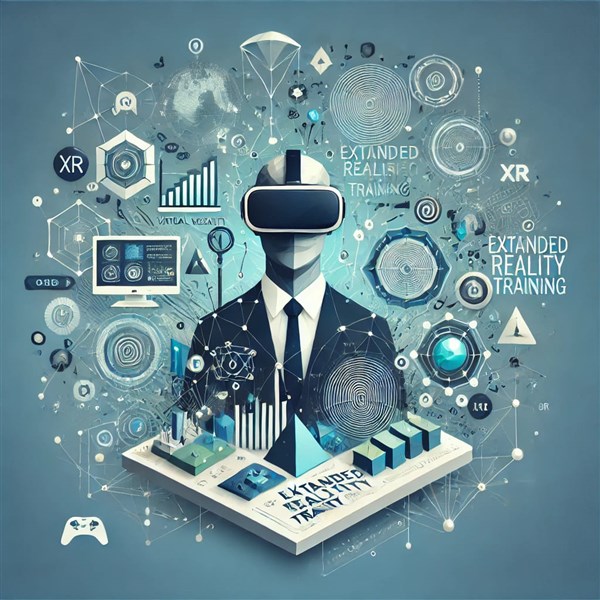We're open through the holidays to support your upskilling goals — book your session today!
We're open through the holidays to support your upskilling goals — book your session today!
Unable to find what you're searching for?
We're here to help you find it
In a world where technology evolves at breakneck speed, traditional methods of learning and training are struggling to keep up. Classroom lectures, PowerPoint slides, and static online modules no longer match the pace of modern industries—or the learning preferences of digital-native workforces.
Enter Extended Reality (XR) Training—an umbrella term that includes Virtual Reality (VR), Augmented Reality (AR), and Mixed Reality (MR) technologies. Once confined to the gaming world or sci-fi movies, XR is now at the forefront of education and workforce transformation. From hands-on medical simulations to industrial equipment training and soft skill development, XR is changing how people learn, retain, and apply knowledge.
In this blog, we’ll explore why Extended Reality Training is not just a trend but the future of skill development, and how it’s already revolutionizing industries around the world.
Extended Reality (XR) is a collective term that refers to all real-and-virtual combined environments and human-machine interactions generated by computer technology. It includes:
In training, XR allows learners to interact with environments, tools, and scenarios in a way that’s engaging, repeatable, and risk-free.
One of the most compelling reasons XR is the future of skill development is its ability to keep learners engaged. Unlike passive learning, XR immerses trainees in the experience. They’re not just watching or reading—they’re doing.
📊 The Science:
According to the National Training Laboratories, retention rates for passive learning methods like lectures are around 5%, while learning by doing (simulation-based learning) can yield retention rates as high as 75–90%.
XR taps directly into this “learn by doing” model, offering a multi-sensory experience that reinforces muscle memory, decision-making, and critical thinking.
Training for dangerous, delicate, or expensive scenarios is often limited by risk and cost. But XR changes the game.
🚑 Examples:
XR provides a controlled, repeatable environment where learners can fail, learn, and retry—without real-world consequences.
While XR training may require an upfront investment in hardware and content development, it’s incredibly scalable and cost-effective over time.
💸 Cost Benefits:
With XR, companies can train more people, more frequently, at a lower cost per user—and with better results.
XR training platforms often come equipped with tracking and analytics tools that give both learners and instructors valuable insights.
📈 Measurable Metrics Include:
This data can be used to tailor future learning, identify weak areas, and even assess employee readiness or certification eligibility.
Everyone learns differently. XR supports personalized learning by allowing users to progress at their own pace and revisit scenarios as needed.
With AI integration, XR systems can:
This adaptive approach ensures better learning outcomes for diverse learners, from new hires to experienced professionals.
One of the biggest challenges in traditional training is the disconnect between learning and doing. XR erases that gap.
🔧 For Example:
This hands-on exposure reduces onboarding time and increases job readiness from day one.
Thanks to cloud and 5G technologies, XR training is no longer limited to physical locations. Teams across the globe can train, collaborate, and interact in shared virtual environments in real time.
🌍 Use Cases:
This flexibility makes XR ideal for the hybrid or remote workforce of the future.
Many of tomorrow’s job roles don’t exist today. XR training helps build transferable, future-ready skills, such as:
Whether you're training frontline workers or knowledge-based teams, XR supports the development of agile, adaptable talent ready to thrive in the digital age.
XR training is not just for tech companies. It’s already being used in:
|
Industry |
XR Training Application |
|---|---|
|
Healthcare |
Surgical simulation, patient empathy training |
|
Manufacturing |
Equipment operation, maintenance procedures |
|
Defense |
Combat simulations, battlefield situational drills |
|
Education |
Interactive science labs, history walkthroughs |
|
Retail |
Customer interaction training, product demos |
|
Real Estate |
Virtual property walkthroughs for agents |
The versatility of XR makes it one of the most scalable training investments across sectors.
XR also opens doors for people with learning disabilities, language barriers, or limited access to physical training environments.
Features like:
…make XR training more inclusive than many traditional learning methods.
Conclusion
Extended Reality is not just a shiny new tool—it’s a revolution in how we learn, train, and prepare for the future of work. As industries evolve and workforce demands grow more complex, XR training provides the agility, scalability, and immersion needed to close skills gaps quickly and effectively.
Whether you're a corporate L&D leader, a university dean, or an individual looking to upskill—investing in XR training is a forward-thinking move that pays dividends in performance, engagement, and retention.
Koenig Solutions, a leading IT training company, is at the forefront of integrating XR into their training modules. With a range of courses in Extended Reality, Koenig Solutions is shaping the future of skill development and training, preparing individuals and businesses for the digital future.

Aarav Goel has top education industry knowledge with 4 years of experience. Being a passionate blogger also does blogging on the technology niche.










